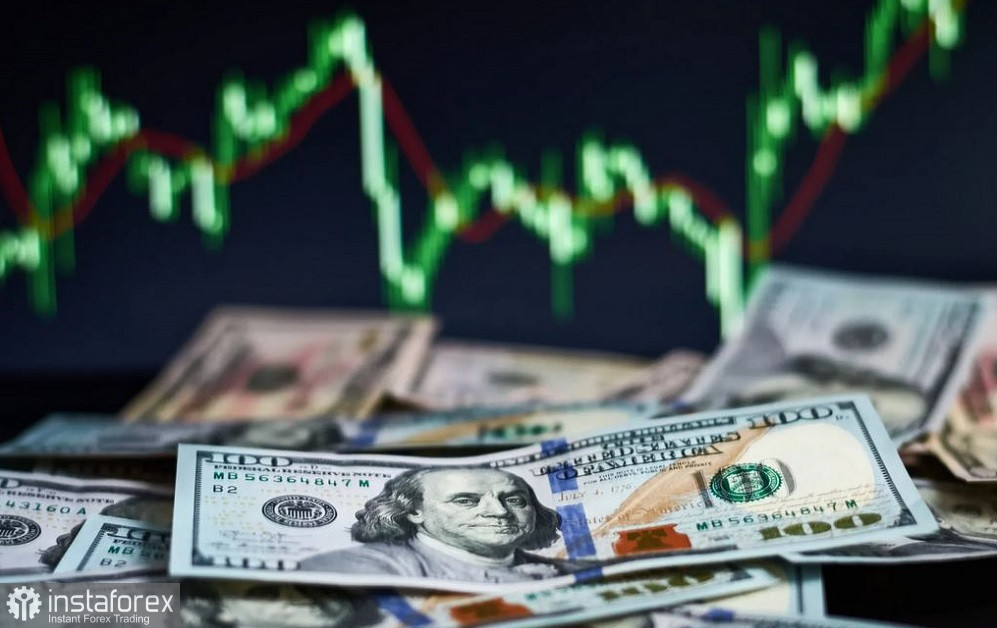On Monday, the EUR/USD pair returned to the 1.08 territory after Friday's retreat. The unexpected surge to the 1.0776 level was puzzling because the price dynamics were not supported by any clear (significant) fundamental factors. The Non-Farm Payrolls data on Friday was not on the USD's side, even though some of its components came out in the "green." However, this report left more questions than answers - this time, the labor market data was not on the greenback's side. Therefore, such a sharp downward movement was more emotional in nature: there are currently no grounds for a sustained downtrend in EUR/USD.

It's worth noting that traders ignored the disappointing Sentix data on Monday. The eurozone Sentix investor confidence index fell to -21.5 in September, against expectations of -19. The results of the survey showed that economic growth forecasts in the eurozone have deteriorated, and the current situation is assessed most negatively in the last three years. Commenting on the survey's findings, Sentix Managing Director Manfred Huebner said that "the situation in Germany remains particularly precarious. Here we are measuring the weakest situation ... since July 2020, when the economy was slowed by the first coronavirus lockdown." Huebner also mentioned that Germany, being the locomotive of the eurozone, is exerting strong downward pressure on the European economy, "The tipping point of a global recession is less distant than one might think," Huebner said.
Such pessimistic conclusions from Sentix, reflecting the mood of eurozone investors, are not conducive to the development of a significant corrective movement in EUR/USD. It's worth recalling that eurozone countries released disappointing PMIs at the end of August, which, firstly, were mostly in the "red," and secondly, fell below the key 50-point mark. In addition, the German IFO indices disappointed as well: all components of the report turned out to be weaker than expected.
After these reports, the market started to doubt whether the European Central Bank would dare to raise rates again at the upcoming meeting. The Sentix report, which is generally of secondary importance, simply added to the pessimistic fundamental picture.
Nevertheless, despite the factors mentioned above, EUR/USD bears failed to build on their success from Friday. Bulls took the initiative, but they also lost momentum as soon as the price crossed 1.0800.
All of this suggests that there are currently no prerequisites for "revolutionary" price movements, either towards the 1.06 territory (or lower) or above the 1.0950 target (the lower band of the Kumo cloud on the daily chart, which also serves as a multi-week price ceiling for the pair).
In essence, the pair is now showing a sideways movement "with a bearish bias," if you will. While the dollar is not enjoying the best of times right now, the single currency is going through a "black streak." By the way, the latest CFTC Commitment of Traders report on speculative trader positions showed that long positions on the euro have decreased. Poor PMI and IFO data, stubborn eurozone inflation data, and weakened hawkish sentiment regarding the ECB's future course of actions are the reasons why traders have increased the number of short positions in the euro.
But all of this is, as they say, are details. Overall, the situation remains uncertain for the EUR/USD pair. If we look at the weekly chart, we can see that the price has been actively declining for six weeks. Last week, buyers tried to take the initiative by organizing a corrective rise to the 1.0946 level. However, they failed and the pair returned to the 1.07-1.08 range and drifted there.
Currently, the pair continues to move sideways. To develop a downtrend, EUR/USD bears need to not only break the support level at 1.0760 (the lower Bollinger Bands line on the daily chart) but also settle below this level. In such a case, the next target will be the 1.0650 mark (the lower Bollinger Bands line on the weekly chart). For buyers, the task is even more challenging: to reverse the trend, they need to settle above the 1.0910 mark. In this case, the Tenkan-sen and Kijun-sen lines will be below the price, and the Kumo cloud will be above it. In addition, the pair will be trading between the middle and upper Bollinger Bands lines. Such a setup would open the way towards the 1.10 level.
In my opinion, the bullish scenario seems unlikely given the current fundamental picture. In order to develop the downward movement, the bears would need more support from the Federal Reserve, many of whose representatives will voice their positions this week (Lori Logan, Lael Brainard, John Williams, Michelle Bowman, Michael Barr). All of these Fed officials have a voting right in the committee, so their stance can have a significant impact on the EUR/USD pair.
Take note that from a technical perspective, we see a bearish bias. On the daily chart, the pair is in between the middle and lower Bollinger Bands lines, as well as below all the lines of the Ichimoku indicator, which has formed a bearish "Parade of Lines" signal. In my opinion, in the medium term, the pair will continue to trade in the range of 1.0760-1.0870 (the lower Bollinger Bands line to the middle Bollinger Bands line on 1D): corrective spikes should be considered as opportunities to open short positions towards the lower band of this price range.





















